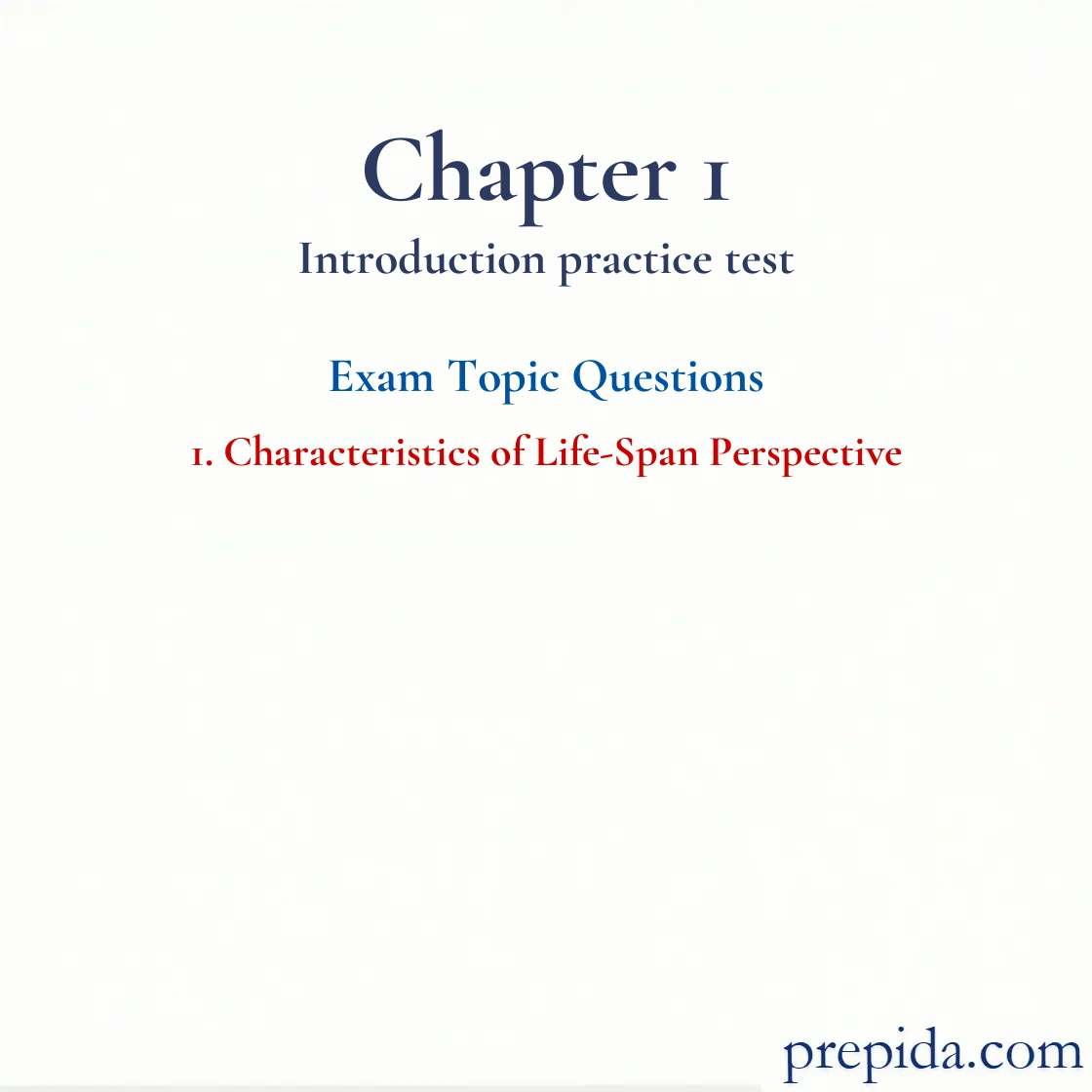
The ________ approach to the study of development emphasizes extensive change from birth to adolescence, especially during infancy, little or no change in adulthood, and decline in old age.
- prescriptive
- constructivist
- traditional
- evolutionary
Addiction: A pattern of behavior characterized by an overwhelming involvement with using a drug and a preoccupation with securing its supply.
According to Paul Baltes's perspective of life-span development, which of the following statements is true?
- Development stops during adolescence.
- Development is multidimensional.
- Development is unidirectional.
- Development occurs independent of context.
Life Span: The maximum number of years an individual can live. The life span of human beings is about 120 to 125 years of age.
According to Paul Baltes, which of the following statements most likely supports the view that development is plastic?
- Early adulthood is not the end point of development; rather, no age period dominates development.
- The cognitive skills of older adults can be improved through training and acquisition of effective strategies.
- Development has biological, cognitive, and socioemotional dimensions.
- All development occurs within a context, or a setting that changes.
Strategies: Deliberate mental activities that improve the processing of information.
Divya is 65 years old. She undergoes training and uses effective strategies to improve her memory. As a result, her memory does not decline but rather improves as she ages. According to Paul Baltes's view, which of the following aspects of the life-span perspective most likely explains the improvement in Divya's memory?
- Development is plastic.
- Development is contextual.
- Development is multidirectional.
- Development is multidimensional.
Life Span: The maximum number of years an individual can live. The life span of human beings is about 120 to 125 years of age.
"Individuals are changing beings in a changing world." Which characteristic of development is reflected in this statement?
- Development is multidisciplinary.
- Development is contextual.
- Development is multidimensional.
- Development is multidirectional.
The cultural makeup of the U.S. population has changed over the past few years because of immigration and other factors. Such long-term changes in the genetic and cultural makeup of a population are part of
- nonnormative multidirectional change.
- normative historical change.
- nonnormative life events.
- nonnormative demographic change.
Normative History-Graded Influences: Influences that are common to people of a particular generation because of historical circumstances.
When she was a child, Anna's home was wrecked by a tornado and her neighbor was killed. More than 30 years later, she is still terrified of storms. This is an example of how a ________ event can influence a person's development.
- normative age-graded
- normative generational
- nonnormative life
- normative history-graded
Nonnormative Life Events: Unusual occurrences that have a major impact on an individual’s life.
According to Paul Baltes, which of the following is true of nonnormative life events?
- They do not happen to all people.
- They are similar for individuals in a particular age group.
- They do not influence the lives of individual people.
- They are usual occurrences.
Nonnormative Life Events: Unusual occurrences that have a major impact on an individual’s life.
Thomas is a teenager who lives with his parents in an American city. During one of his high school years, Thomas's house gets destroyed in a fire, forcing his family to relocate to a rural area. According to Paul Baltes, this incident is likely to affect Thomas's development and life and is most likely an example of a
- normative history-graded influence.
- nonnormative life event.
- minority influence.
- cohort effect.
Nonnormative Life Events: Unusual occurrences that have a major impact on an individual’s life.
Psychologists, sociologists, anthropologists, neuroscientists, and medical researchers all share an interest in unlocking the mysteries of development through the life span. This indicates how development is
- multidirectional.
- plastic.
- multidisciplinary.
- multidimensional.
Life Span: The maximum number of years an individual can live. The life span of human beings is about 120 to 125 years of age.
According to Paul Baltes's life-span perspective, which of the following is true of contexts?
- They have a biological impact on development.
- They are influenced by genetic factors.
- They remain constant over time.
- They refer to the capacity for change.
Wang Ying is a clinical psychologist who specializes in counseling young adults. She helps her clients cope with depression, anxiety, and life transitions. In this scenario, Wang is most likely to
- work individually with clients.
- instruct clients to resolve their problems without seeking outside help.
- refrain from referring clients to medical facilities.
- conduct research on the effects of specific policies on children's well-being.
Individual Differences: The stable, consistent ways in which people differ from each other.
Agatha is 83 years old. According to Baltes and his colleagues, ________ and ________ in her capacities will take center stage.
- growth; maintenance
- maintenance; regulation of loss
- regulation of loss; augmentation
- growth; regulation of loss
Internalization Of Schemes: Piaget’s sixth and final sensorimotor substage, which develops between 18 and 24 months of age. In this substage, the infant develops the ability to use primitive symbols.
According to Paul Baltes, which of the following do normative age-graded influences include?
- sociocultural factors and environmental processes
- economic, political, and social upheavals
- long-term changes in the cultural makeup of a population
- long-term changes in the genetic composition of a population
Normative Age-Graded Influences: Influences that are similar for individuals in a particular age group.
Influences that generally affect a generation (for example, the effect of the Vietnam War on the baby boomers) are considered ________ influences.
- nonnormative multidirectional
- normative age-graded
- nonnormative age-graded
- normative history-graded
Normative History-Graded Influences: Influences that are common to people of a particular generation because of historical circumstances.